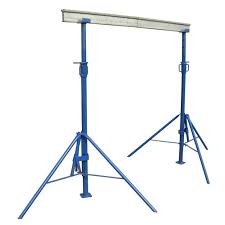Nov . 30, 2024 06:28 Back to list
Formwork Solutions for Efficient Construction of Beams, Columns, and Slabs
Formwork for Beams, Columns, and Slabs A Comprehensive Overview
In the construction industry, formwork is an essential component in the structural building process. It is the temporary or permanent mold into which concrete is poured to create beams, columns, and slabs. The right formwork not only ensures the structural integrity of the finished product but also affects the overall project timeline and costs. This article explores the various types of formwork used for beams, columns, and slabs, their applications, and the advantages they offer.
Types of Formwork
There are several types of formwork available in the market, each designed for specific structural elements and construction methodologies. The most common types include
1. Timber Formwork Traditionally, timber formwork was the go-to option for many construction projects. Made from plywood or solid timber, it is easy to work with and can be customized on-site. However, it is not very durable and can lead to increased labor costs for repetitive uses.
2. Steel Formwork Steel formwork is gaining popularity due to its durability and reusable nature. It is suitable for large projects, as it can withstand the pressure of the wet concrete and can be easily transported and assembled. Steel formwork is often used for columns and slabs, providing a smooth finish.
3. Aluminum Formwork Lightweight and easy to handle, aluminum formwork is another option that is growing in popularity. Similar to steel, it offers durability and can be reused multiple times. Aluminum formwork is particularly beneficial in projects where speed and efficiency are critical.
4. Plastic Formwork This formwork type is made from high-density polyethylene. Plastic formwork is lightweight, resistant to chemicals, and easy to clean, making it suitable for different types of structures. Its modular design allows for quick assembly and efficient project completion.
5. Insulated Formwork Used primarily for energy-efficient buildings, insulated formwork provides thermal insulation in addition to the structural framework. It can consist of polystyrene panels that lock together to form a strong, insulated shell for pouring concrete.
Application in Construction
When constructing beams, columns, and slabs, the choice of formwork is critical to achieving the desired strength, aesthetic, and functionality.
- Beams Formwork for beams typically involves long strips that hold the concrete in place until it cures. The design should take into consideration the dimensions and load-bearing requirements. Steel and aluminum formwork are often preferred for their strength and reusability.
formwork for beams columns and slabs factories

- Columns Column formwork needs to support the vertical load and should be able to withstand lateral pressure from the wet concrete. Modular systems are common for column formwork, allowing for quick setup. Options like steel and plastic are popular for their resilience.
- Slabs Slab formwork generally requires larger panels that can support extensive surface areas. Systems such as flat plates, voided slabs, or ribbed slabs can be constructed using a combination of timber, steel, or aluminum formwork.
Advantages of Using the Right Formwork
Choosing the right formwork offers numerous advantages
1. Cost Efficiency Utilizing reusable formwork can significantly reduce materials costs over time while improving project efficiency.
2. Time Savings Advanced formwork systems can speed up construction timelines due to easier assembly and disassembly processes.
3. Quality Correctly designed and installed formwork contributes to the quality of the concrete structure, minimizing defects and imperfections.
4. Safety Proper formwork can enhance safety on construction sites by providing stable and secure frameworks during the pouring process.
5. Sustainability By opting for reusable and recyclable formwork materials, construction projects can reduce their environmental impact.
Conclusion
The choice of formwork for beams, columns, and slabs is vital to the success of any construction project. By understanding the various types of formwork and their specific applications, contractors can enhance project efficiency, reduce costs, and ensure high-quality results. As technology in the construction industry continues to advance, it is essential for builders to stay informed about the latest developments in formwork solutions and select the best options for their specific needs.
-
High-Quality U Head Jack Scaffolding – Reliable Scaffolding Jack Head Manufacturer & Factory
NewsJul.08,2025
-
High-Quality I Beam H20 Leading Timber Beam H20 Material Factory, Exporters & Manufacturers
NewsJul.08,2025
-
High-Quality Powder Coating Steel Formwork - Durable & Corrosion Resistant Solutions
NewsJul.07,2025
-
Inclined Column Formwork Supplier – Durable & Precise Solutions for Unique Structures
NewsJul.07,2025
-
High-Quality Water Stop Solutions Trusted Water Stop Company & Suppliers
NewsJul.07,2025
-
High-Quality Formwork Material Supplier Reliable Manufacturer & Factory Solutions
NewsJul.06,2025